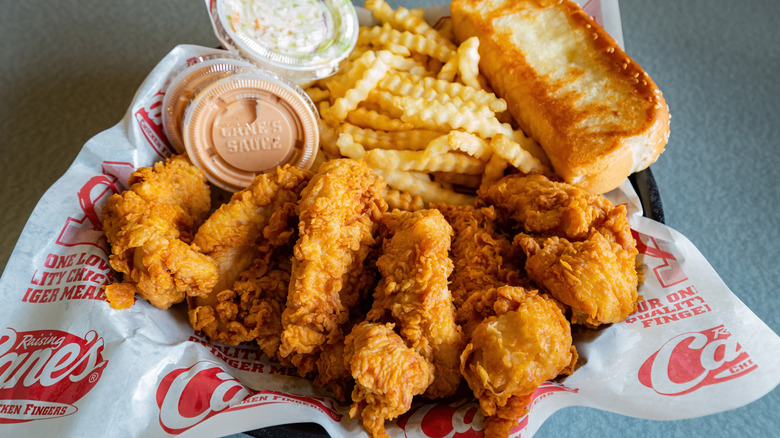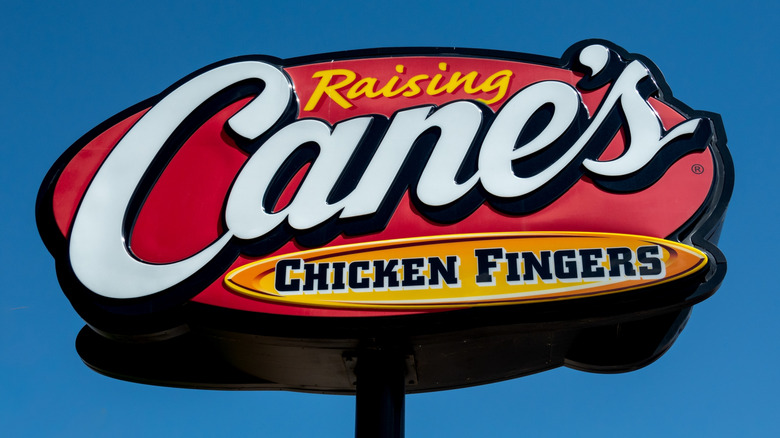The Cut Of Chicken Raising Cane's Uses For Its Iconic Tenders
Raising Cane's has been doing one thing and doing that one thing right for 28 years: chicken fingers. The frenzy for the Louisiana-founded restaurant chain's fried poultry is evident in the long lines snaking through its dining rooms. For those who prefer to measure success with hard numbers, Raising Cane's boasts more than 800 restaurants across the globe and "Restaurant Business Magazine" reports that the company's sales for the first half of 2024 increased by 17.5% compared to the same period last year. All of those accomplishments can be traced back to one key factor: Those iconic tenders, exclusively made from premium cuts of chicken tenderloin.
Prized for its succulent quality when properly cooked, the tenderloin is located near the rib bones along the breast, attached to the breast by a thin tendon. The muscle is less utilized compared to others — chickens don't use it for bobbing about or flapping — resulting in incredibly tender meat with a mild flavor that's similar to the breast. Now, a bit of a semantics war has erupted when it comes to naming flat, boneless cuts of chook — there is a difference between tenders and strips. And to confuse matters further, Raising Cane's branded term for their tasty fried chicken is fingers. When faced with a menu where the chicken parts are of unknown origin, keep in mind that a proper tender comes from the actual tenderloin, while a strip could be sourced from any part of the breast or even cuts of dark meat.
Raising Cane's uses hand-battered fresh chicken tenders
Anyone could be given a top-end ingredient and assemble a mediocre or even a downright-lousy dish without proper preparation, which means Raising Cane's has worked to ensure that its fingers come out right by carefully engineering every step — from delivery to dipping sauce. The chicken is always fresh, never frozen, so natural juices aren't lost through defrosting. Certified Bird Specialists are responsible for battering every piece by hand, and the fingers are marinated for 24 hours and always fried to order. And since everyone knows that chicken tenders are simply a vehicle for sauces, Raising Cane's has created a dip with a highly classified recipe that does not disappoint. The remoulade-like dressing with a salmon hue offers a feisty blend of smoke, tang and mild heat.
Raising Cane's may have risen to the top of the fast-casual chicken finger market, but anyone who considers themselves a true fan of the now-ubiquitous, please-all food should pay their respects to the home of the original fried tender. Like most iconic dishes, the exact origins can't definitively be proven. However, the restaurant that is pretty much accepted as the inventor is located in Manchester, New Hampshire, which self-declared itself the Chicken Tender Capital of the World in 2023. But if a trip solely to seek out poultry isn't in the cards, creating a classic crispy baked batch of chicken tenders at home is actually pretty simple since you don't need a fryer to create an airy, crispy crust.

